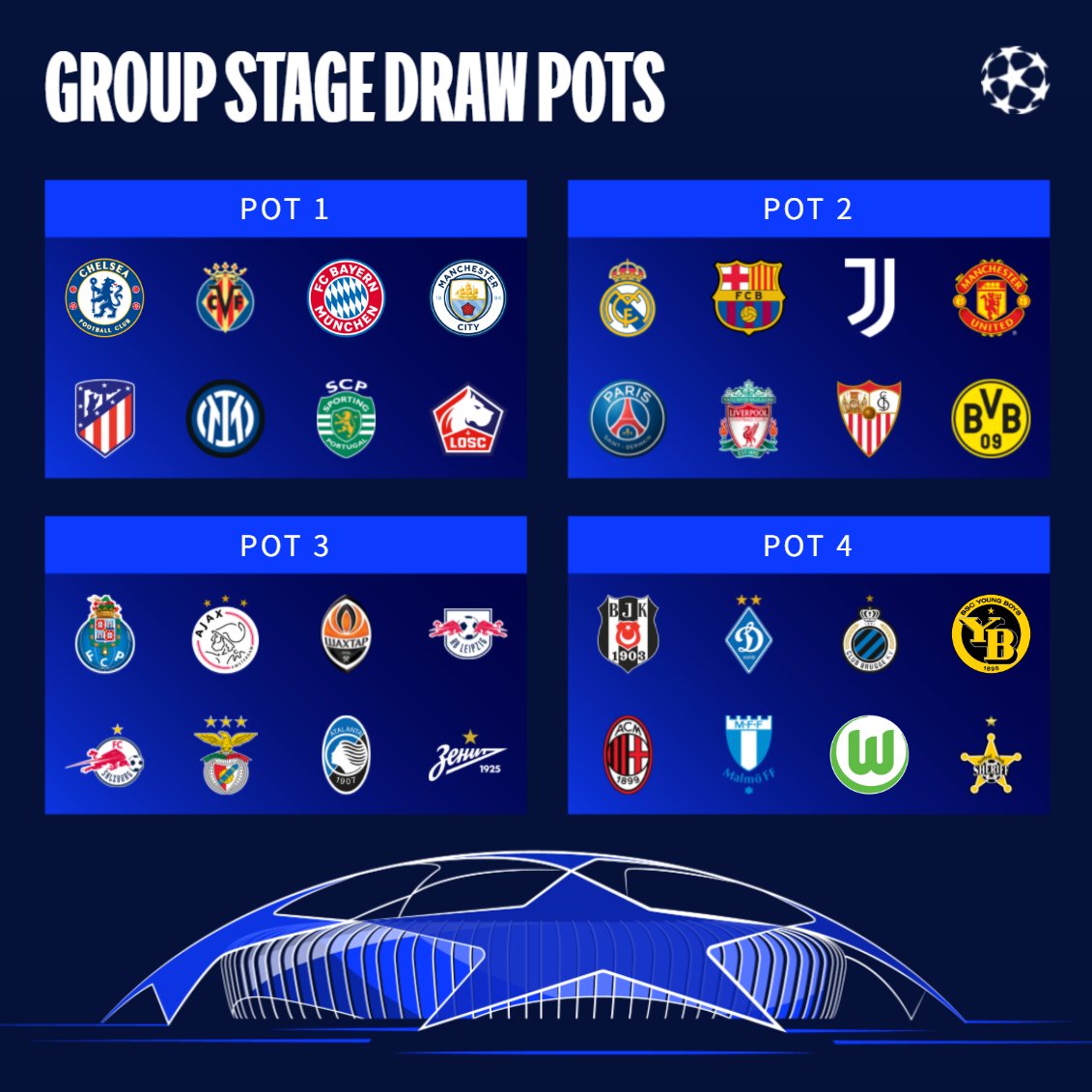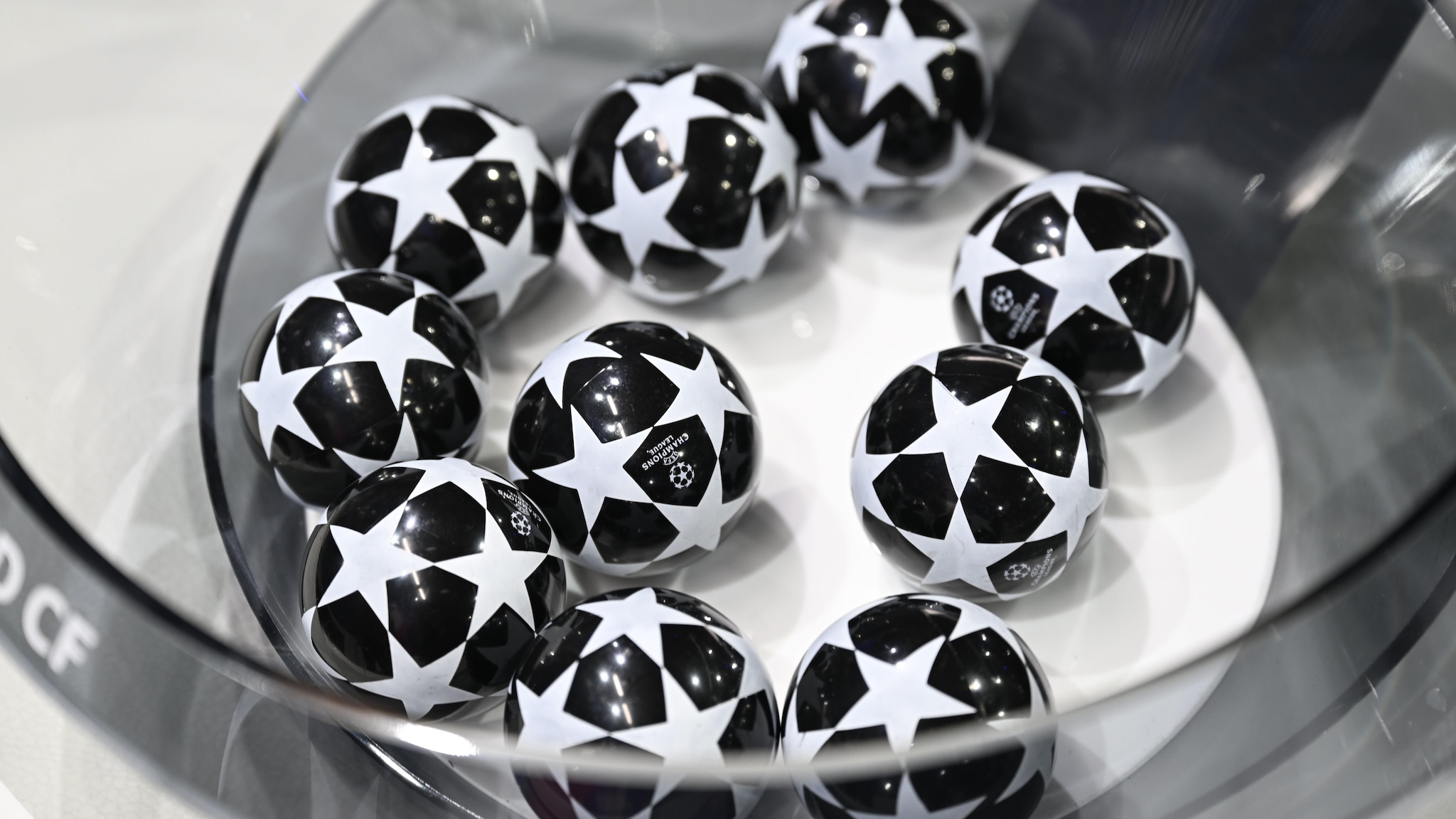The UEFA Champions League draw is one of the most anticipated events in the world of football. Every year, millions of fans around the globe tune in to witness the excitement as teams are paired for the knockout stages. This prestigious competition brings together the best clubs from across Europe, making each draw a thrilling moment for players and supporters alike.
As the pinnacle of club football, the Champions League represents the highest level of competition in Europe. The draw process plays a crucial role in determining the fate of each participating team, influencing their path to glory. Understanding how the draw works and its significance is essential for any football enthusiast.
In this article, we will delve into the intricacies of the Champions League draw, exploring its history, rules, and the factors that make it so captivating. Whether you're a seasoned fan or new to the sport, this guide will provide you with everything you need to know about this iconic event.
- Www Movie Rulz Your Ultimate Destination For Movies And Entertainment
- Movierulz 5 2025 Download Your Ultimate Guide To Safe And Legal Movie Streaming
Table of Contents
- History of the Champions League Draw
- Rules and Regulations of the Draw
- The Draw Process Explained
- Seeding System in Champions League
- Group Stage Draw
- Knockout Stage Draw
- Impact of the Draw on Teams
- Key Statistics and Trends
- Famous Champions League Draw Moments
- Future of the Champions League Draw
History of the Champions League Draw
The Champions League draw has a rich history that dates back to the inception of the competition in 1955 as the European Cup. Over the years, the format and rules have evolved to accommodate the growing number of participants and ensure fairness in the competition.
In the early days, the draw was a simple process, often conducted manually with limited restrictions. As the tournament gained popularity, more sophisticated methods were introduced to ensure transparency and impartiality.
Today, the Champions League draw is a highly organized event, broadcast live to millions of viewers worldwide. It has become a spectacle in its own right, with elaborate ceremonies and prestigious venues hosting the event.
- Unveiling The World Of Movieshd Blog Your Ultimate Guide To Streaming And Downloading Movies
- Mario Banchero The Rising Star In The Nba
Rules and Regulations of the Draw
The rules governing the Champions League draw are meticulously designed to maintain the integrity of the competition. These rules are set by UEFA and cover various aspects, including team seeding, group formation, and knockout stage pairings.
Key Regulations
- No two teams from the same association can be drawn in the same group.
- Teams are seeded based on their UEFA coefficients, ensuring a balanced distribution.
- In the knockout stages, teams cannot face opponents they have already played in the group stage.
These regulations ensure that the competition remains competitive and fair, providing all teams with an equal opportunity to succeed.
The Draw Process Explained
The Champions League draw process is a carefully orchestrated event that combines tradition with modern technology. It typically takes place in a grand ceremony attended by football dignitaries, players, and media representatives.
Steps in the Draw Process
- Teams are divided into pots based on their seeding.
- Balls representing each team are placed in a container and drawn randomly.
- Draws are conducted for each stage of the competition, starting with the group stage.
This process is overseen by UEFA officials to ensure compliance with the rules and regulations. The live broadcast adds to the excitement, allowing fans to experience the tension and anticipation firsthand.
Seeding System in Champions League
The seeding system is a crucial aspect of the Champions League draw, influencing the composition of groups and knockout stage pairings. Teams are seeded based on their UEFA coefficients, which are calculated using their performance in European competitions over the past five years.
Seeding ensures that stronger teams are evenly distributed across the groups, preventing the formation of "groups of death" where multiple top-tier teams are placed together. This system helps maintain a balanced competition and enhances the overall quality of matches.
Group Stage Draw
The group stage draw is one of the most significant events in the Champions League calendar. It determines the initial matchups for the participating teams and sets the stage for the rest of the competition.
Teams are divided into four pots based on their seeding, with one team from each pot drawn into each group. This ensures a diverse mix of teams in every group, providing fans with exciting matchups and unpredictable outcomes.
Knockout Stage Draw
The knockout stage draw takes place after the group stage concludes, determining the pairings for the round of 16 and beyond. This stage is where the competition intensifies, as teams battle it out in head-to-head matches to secure their place in the final.
Unlike the group stage draw, the knockout stage draw is conducted without pots, allowing for more flexibility in pairings. However, certain restrictions apply, such as prohibiting teams from the same association or group stage opponents from facing each other.
Impact of the Draw on Teams
The outcome of the Champions League draw can significantly impact a team's prospects in the competition. A favorable draw can provide a clear path to the latter stages, while an unfavorable one can present a daunting challenge.
Teams must adapt their strategies and tactics based on their opponents, making the draw a critical factor in their planning. Coaches and players often analyze the draw carefully, identifying strengths and weaknesses to exploit in their matches.
Key Statistics and Trends
Over the years, the Champions League draw has produced numerous interesting statistics and trends. These insights provide valuable context for understanding the competition and predicting future outcomes.
- Teams from Spain and England have historically performed well in the Champions League, with multiple titles to their name.
- Certain venues have become synonymous with memorable draws, hosting iconic moments in the competition's history.
- The seeding system has evolved to reflect changes in the European football landscape, adapting to the rise of new footballing powers.
These statistics highlight the dynamic nature of the Champions League and the ever-changing landscape of European football.
Famous Champions League Draw Moments
The Champions League draw has been the backdrop for some of the most memorable moments in football history. From unexpected matchups to dramatic twists of fate, these moments have left an indelible mark on the competition.
One such moment occurred in the 2013-14 season when Real Madrid were drawn against Bayern Munich in the semifinals, setting the stage for a thrilling encounter between two of Europe's giants. Another notable instance was the 2017-18 draw, where Liverpool faced Manchester City in a high-stakes clash.
These moments underscore the unpredictability and excitement of the Champions League draw, making it a must-watch event for football fans worldwide.
Future of the Champions League Draw
As the Champions League continues to evolve, so too does the draw process. UEFA is constantly exploring new ways to enhance the competition, ensuring it remains relevant and exciting for fans.
Potential changes include modifications to the seeding system, adjustments to the draw format, and the introduction of new technologies to improve the process. These innovations aim to address the challenges posed by the ever-growing popularity of the competition and the increasing number of participating teams.
Conclusion
The Champions League draw is an integral part of the competition, shaping the journey of each participating team and influencing the outcome of the tournament. Understanding the intricacies of the draw process, its rules, and its significance is essential for any football enthusiast.
We invite you to share your thoughts and experiences in the comments section below. Have you witnessed any memorable Champions League draw moments? Let us know! Don't forget to explore other articles on our site for more insights into the world of football.
- Hd Hub Movie 2 Your Ultimate Guide To Highquality Movie Streaming
- Prmovies Com Download Your Ultimate Guide To Movie Downloads


